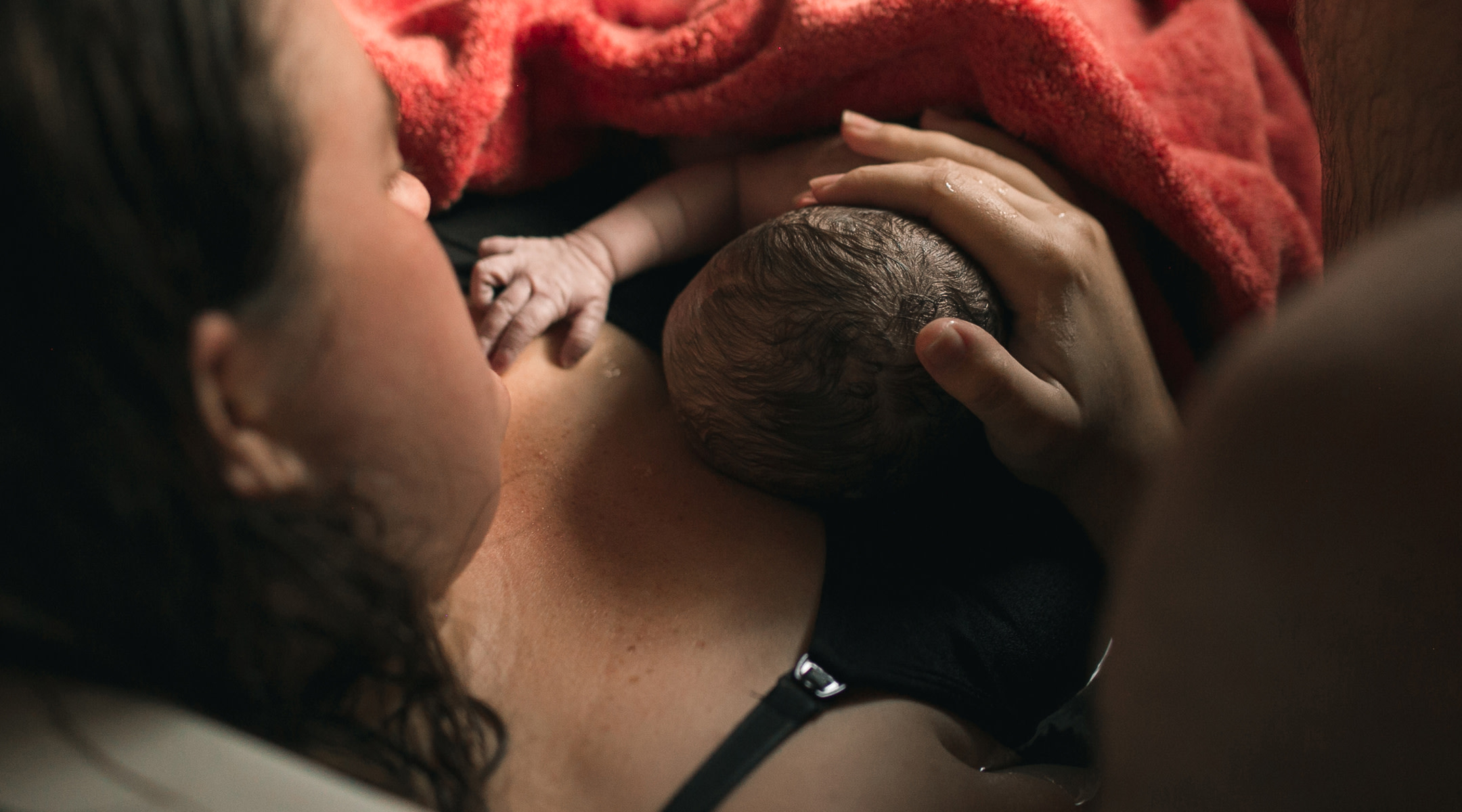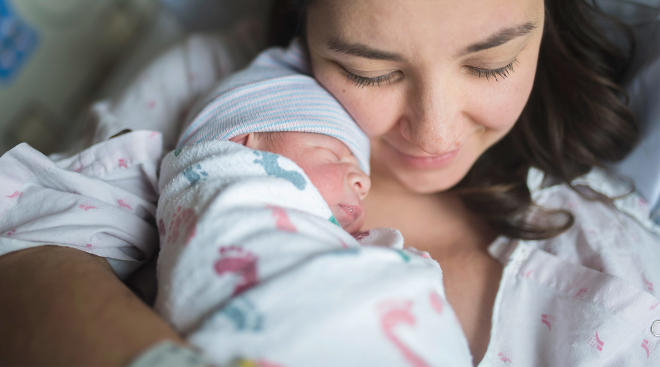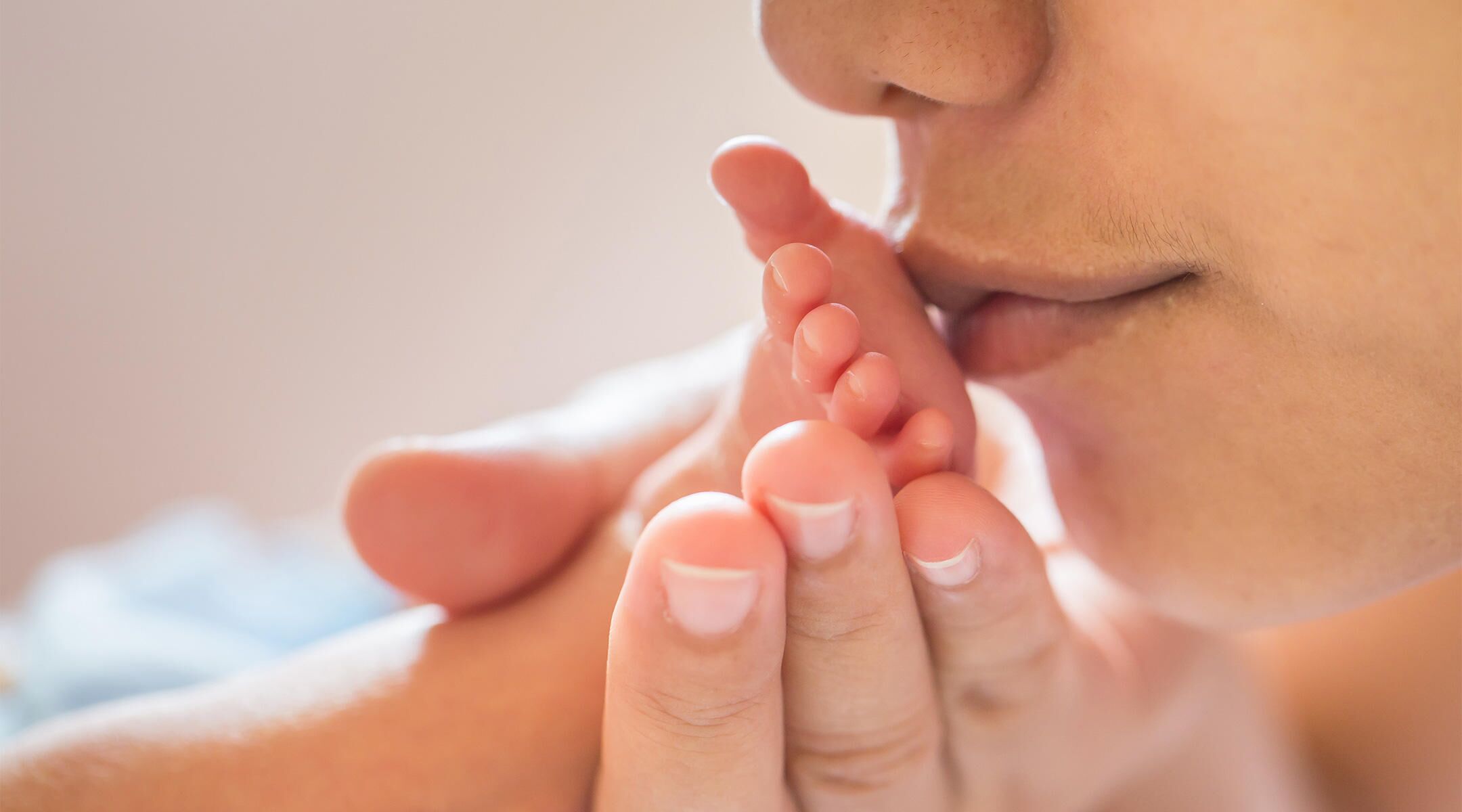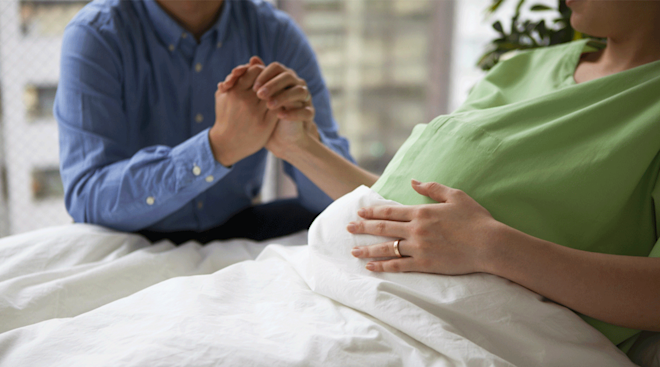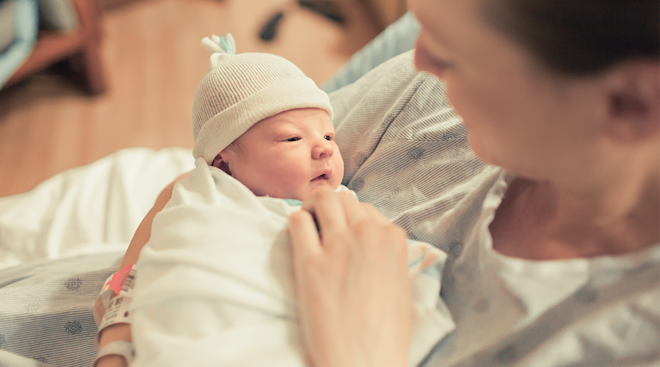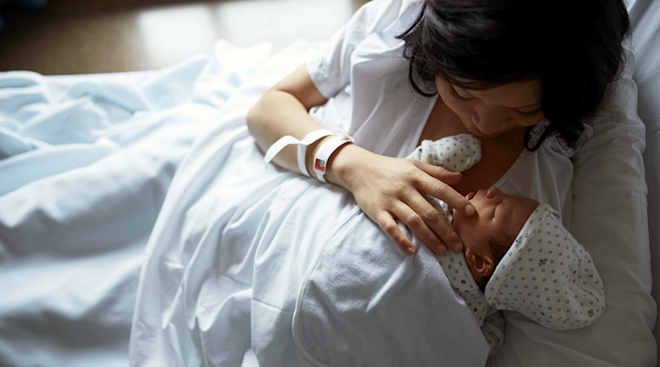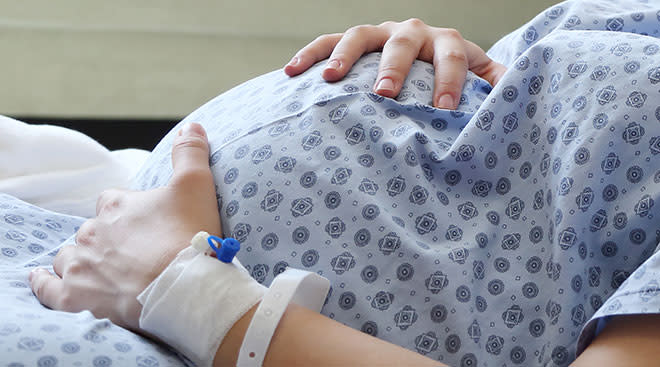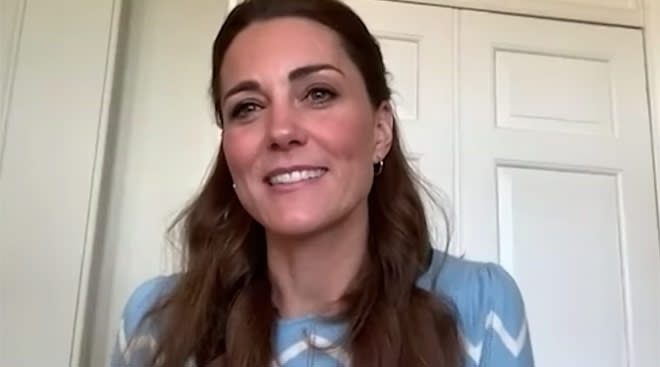Natural Birth: What to Know When Planning for an Unmedicated Birth
When it comes to childbirth, there are a lot of decisions to make, including who you want your healthcare provider to be, where you want to give birth and whether or not you want any pain medication. Wondering if you should forego the epidural and opt for a “natural” birth? Here’s what you need to know about the possible risks and benefits of unmedicated births, as well as some preparation tips, straight from the experts.
The term “natural birth” has somewhat of a complicated history. In the past, it’s been used to describe birth experiences that occur vaginally without the need for medical intervention, such as labor inductions and epidurals, says Casey Selzer, CNM, a certified nurse-midwife and director of education at Oula.
While natural birth is still used to refer to a labor and delivery experience free of pain medication, the term is beginning to be phased out. “[The term] carries a judgment that there is a kind of birth that is ‘unnatural,’” Selzer says—and that’s simply not the case. All birth is natural, regardless of whether pain medication or surgical intervention is needed. When it comes to childbirth, the most important aspect is ensuring the birthing person feels supported, empowered and confident in their experience, as this helps them build a strong foundation for parenthood. “Whether you labor for two hours and birth at home without medical interventions, or labor for 48 hours and birth via cesarean, becoming a parent is one of the most natural, instinctive experiences in human existence,” Selzer says.
The potential benefits of a “natural birth” vs. epidural are personal and will depend on who you ask, as all labor and delivery methods have their pros and cons. That said, experts agree that unmedicated births may offer the birthing person an increased level of mobility (since you wouldn’t be hooked up to an epidural catheter) and feeling of control around their experience. According to Rebekah Mustaleski, CPM, a certified professional midwife and compression director at Motif Medical, many moms who have natural birthing experiences report higher levels of satisfaction. (However, keep in mind that satisfaction with any birthing method can be subjective.)
Below, some of the possible benefits of natural birthing, from the experts:
-
Increased mobility: Without an epidural, you may be able to move around more and use an exercise ball, says Robin Kalish, MD, an ob-gyn and maternal fetal medicine specialist with Weill Cornell Medical Center in New York City. Managing pain with movement can release endorphins and lessen the intensity of pain, Selzer adds. Plus, moving around can help promote labor and help baby further down the birth canal. “When you’re able to feel the pressure of the fetus on the pelvic floor, it allows a spontaneous urge to push,” Selzer says.
-
Reduced risk of side effects: Pain medication for birth is very safe and frequently used, and potential complications are uncommon, Kalish says. That said, having an unmedicated birth could reduce the risk of experiencing possible side-effects. Plus, while medications (such as Pitocin, used for labor induction, and epidurals) are safe, they may alter the birth experience, causing it to be slower, with more tearing or make it harder to push, Mustaleski adds. (Keep in mind, however, that unmanageable labor pain may also increase these risk factors.)
-
Quicker recovery: Postpartum recovery is highly individual and will ultimately depend on multiple factors. However, when moms give birth naturally—without labor induction or an epidural—the birth can sometimes result in a shorter push time and fewer tears, Mustaleski says, leading to a quicker postpartum recovery.
-
Better gut health for baby: Delivering vaginally helps babies have a more diverse gut flora and healthier microbiome, Mustaleski says. This helps improve their overall health and can reduce the risk of obesity, asthma and type 2 diabetes.
Similar to the benefits of natural birth, the risks will be highly personalized and vary between individuals. Depending on your pain tolerance and pregnancy, an unmedicated birth may not be possible in some situations (more on this below). However, for those that are medically able and choose to skip pain medication, as long as they can access the proper resources and support, Selzer says there aren’t any clear downsides to unmedicated births other than the pain of labor.
When trying to decide if an unmedicated birth is right for you, there are a few things to consider. The most important are the circumstances surrounding your pregnancy. Certain conditions that could make an unmedicated birth harder or unsafe to achieve include:
- A high-risk pregnancy
- A pregnancy with twins or multiples
- Baby is in breech position
- You’ve had a previous c-section
- You’re hoping for a VBAC
It’s also important to understand how well you tolerate pain. “Everyone experiences pain differently, and only you will know what is right for you when you go through the labor process,” Kalish says. Pain can significantly elevate your heart rate, which can be dangerous for people with certain medical conditions. “For those individuals, an epidural may be important to preserve their health during labor,” Kalish adds. It’s always best to talk to your healthcare provider to figure out if an unmedicated birth may be achievable considering your individual circumstances and medical history.
Medical complications aside, to figure out if an unmedicated birth is right for you, Kalish recommends learning more about the birthing process and pain medication options, as well as attending prenatal childbirth classes. Selzer also recommends asking yourself questions around:
- How mentally alert and mobile you want to be during labor
- What methods of pain relief have worked for you in the past
- How supportive your birthing location is of unmedicated births
- What kind of support system and comforting you want during labor
Labor is hard work, and to do it without pain medication requires learning how to cope, self-soothe and feel supported during the experience. “Without that support, a person might feel helpless amidst their experience, overwhelmed and afraid,” says Selzer. “It’s also important to remember that even if you plan for an unmedicated labor, you might change your mind during your experience or have medical complications arise that change the dynamics of your situation. Keeping an open mind will help set you up for success.”
You can have an unmedicated birth anywhere, including at home, at a birthing center or at a hospital. According to one report, only 1.64 percent of births in 2018 took place outside of a hospital. But, as the Centers for Disease Control and Prevention notes, the trend of birthing outside of a hospital has been on the rise since 2004.
When picking a natural birth location, think about your priorities. There is no wrong choice—as long as the people who’ll be around you can support your desire to have an unmedicated birth. “You should discuss your birth preferences with your obstetric provider to be sure that you have shared and realistic expectations,” Kalish says. Also, talk to the medical professionals at your proposed location beforehand to get a good understanding of its policies. “The most important thing is understanding the limitations of your birth location choice so you can arrange adequate preparation and support during the experience,” Selzer says.
You’ll also want to make sure the birthing room has plenty of square footage. “Allowing mom the space to move through the labor process is really important,” explains Linda Perry, CNM, is a certified nurse midwife in the New York City area. Moving around and putting your body into different positions can help you manage your pain and get baby in the right position for birth. Below, some things to consider for natural birthing in a hospital, birthing center and at home.
Natural birth in a hospital
In past decades, hospitals have been the most popular choice for childbirth. “Many people prefer to be in a hospital setting because they want the safety net of Western medicine, in the rare case something goes awry,” says Christina Sebestyen, MD, founder of OBGYN North and Natural Beginning Birth Center in Austin, Texas.
Keep in mind, however, certain hospitals may also have protocols they may not be able to change, such as requiring IV fluids, continuous monitoring and lack of access to a tub or shower for hydrotherapy, Selzer says. If these are important for your natural birthing experience, speak to your hospital or look at a birthing center instead.
Financially, hospitals can cost the most, but your health insurance may cover all or most of the bill, as long as the hospital where you deliver is considered in-network.
Natural birth in a birthing center
Birthing centers may be a part of a hospital, with either a dedicated floor or a freestanding building nearby, Sebestyen says, but they tend to feel more like a home. “They’re a good choice if you want a home birth experience but don’t like the idea of the messy things happening in your house,” she explains.
Many birth centers are designed to support unmedicated births, Selzer adds. “You will have comfort tools more readily available and less imposition of protocols, staff and technology interruptions that may impact your ability to labor without medication.”
Birthing centers can carry a much lower total price tag but may not be covered by your health insurance, or you may have to go through a reimbursement process.
Natural home birth
For people who have negative connotations with a hospital setting—for example, if a family member has been sick or passed away there—birthing at home can help with comfort and relaxation. “There are women who feel safe at home—it’s their sanctuary; there are no restrictions on how many people can be there or whether you can eat and drink,” Sebestyen notes.
For natural home births, make sure to have a trained physician, certified nurse-midwife or certified midwife on hand. You may also want the support of a doula to help you through the process. Financially, natural home births can often be the cheapest option but include stipulations, such as if the midwife and doula only accept cash.
The key to a successful unmedicated birth is education and communication. The experts breaks down preparation into a few key areas:
Educate yourself
This is especially important for people giving birth for the first time. Learn about the physiology of childbirth, including the different stages of labor, Mustaleski says. Attending childbirth classes, exploring childbirth methods (like Hypnobirthing and Lamaze), reading books, watching birthing videos and speaking with a trained professional are all ways to do this. “Get comfortable with the sounds people make in labor,” she adds. “This can be one of the most uncomfortable parts of giving birth, but it’s so normal.”
Find your support system
Giving birth naturally is hard work and can be overwhelming, so you’ll need to surround yourself with people who support you and can coach you through the tough stuff. “My doula was with me during labor and suggested things that helped, like hopping in the shower and using nipple stimulation and squats to help speed things up,” says Maya B. Another benefit to having a support person present? “[They] can also help you realize if you do need to course-correct and consider a different option, should that need arise during your birth,” adds Mustaleski.
Prepare your body
Birth is a physically taxing process. Pregnancy workouts have numerous benefits, including helping you to physically prepare for birth. “It doesn’t have to be anything crazy or intense,” Mustaleski says. “In fact, walking is my favorite way for people to get ready for birth. Walk for 30 minutes four to five times a week. Yoga and swimming are other great ways to help your body physically prepare for labor.” Mom-to-be Reginah C. shares, “I work out, do yoga and stretch daily to get my body ready.”
Prepare your mind
According to Mustaleski, “Having an unmedicated birth is 90 percent a mental game.” Practice birth affirmations, relaxation techniques and daily meditations to learn how to stay calm and mentally prepare. “I mentally prepared with hypnobirthing tracks and videos,” says Paula P. “I also read positive birth stories and learned relaxation and breathing techniques.” Communication with your birth team is also crucial—and it may help to start talking to them about the harder moments before labor starts. This way, they’ll know how to better help you overcome any hurdles during labor.
Plan for labor pain management
The toughest part of unmedicated births is handling the pain—and it requires some preparation. Figure out what methods work best for you ahead of time and add them all to your toolbox, Tiffany Albinger, a doula and co-owner of Embracing Labor in San Diego, recommends. But building a toolbox takes practice. Selzer’s advice? “Integrate a new tool each night into your bedtime routine, and you’ll be able to share with your birth partner what feels good to you and might be helpful on the big day.” It’s also a good idea to ensure you’ll have access to the pain management tools you’ll need at your location, Selzer adds.
“Try to relax through each contraction,” says Jackie R. “I remember panicking as the contractions built, so I wasted energy fighting it rather than just going with it, because each contraction will end.”
Labor is painful, but that doesn’t mean your body can’t handle it. “It’s empowering for women to feel that intensity and work through it, and then look back and realize how amazing they did,” Perry says. It won’t be easy, but waiting at the finish line is your baby.
Plan for the costs
Looking into insurance coverage is an aspect of childbirth many don’t talk about, but that doesn’t make it any less important. In planning for the financial costs of childbirth, do your homework ahead of time so you know what to expect. Talk to your partner to come up with a plan for any unforeseen costs.
How to cope if an unmedicated birth doesn’t go your way
Despite all your preparation and your birth plan, labor and delivery—like parenting—is unpredictable and may not go the way you envisioned. To best prepare for this, discuss all the “what-if” scenarios with your partner and healthcare provider in advance. Not only can this help mentally prepare you for (almost) all possibilities, but it also ensures everyone has aligned goals and expectations.
During the birthing process, be open-minded. Even if you’re really hoping for an unmedicated birth, remember that if a doctor or midwife suggests introducing medicine, they’re usually looking out for you and baby. “While an unmedicated birth can be the plan, a healthy mom and baby is the goal,” Mustaleski says. “You might have to change your path to reach the goal, and there is nothing wrong with that.”
Remind yourself that baby’s (and your) health is the top priority. “Having medical interventions doesn’t mean that you failed or that you did a bad job. That was the way that baby needed to be born, and, as a mom, you made that successful,” Albinger says. “It’s okay to be sad about the loss of the birth that you were planning. But you used your power in making really great and well-informed decisions, no matter the outcome.” After all, using your knowledge and power to make decisions that secure baby’s health and happiness is really what parenting is all about.
About the experts:
Rebekah Mustaleski, CPM-TN, IBCLC, is a certified professional midwife specializing in evidence-based maternity care. She co-founded Roots & Wings Midwifery in Knoxville, Tennessee. Mustaleski received her bachelor’s degree in psychology from Centre College and worked as a doula and birth photographer prior to establishing Roots & Wings.
Casey Selzer, CNM, LCCE, is a certified nurse midwife and director of education at Oula. She began her training as a birth and postpartum doula in 2002 and graduated Columbia’s Nurse-Midwifery Program in 2007. Since then, she has worked in Bellevue Hospital and, most recently, with Mount Sinai West.
Robin Kalish, MD, FACOG, is an ob-gyn with expertise in high-risk pregnancies. She is also the director of clinical maternal-fetal medicine at Weill Cornell Medical Center. She earned her medical degree from the University of Tennessee College of Medicine and completed her residency at Winthrop-University Hospital in Mineola, New York. Following her residency, she completed a fellowship in maternal-fetal medicine at Weill Cornell Medical College, where she has been a faculty member since 2003.
Christina Sebestyen, MD, FACOG, is the founder of OBGYN North and Natural Beginning Birth Center in Austin, Texas. She earned her medical degree from the University of Pennsylvania and completed her residency at Harvard University.
Linda Perry, CNM, is a certified nurse midwife and founder of Lifelong Midwifery, located in New Jersey. She earned her bachelor of science from the National College of Midwifery and later studied registered nursing at Excelsior College and Frontier Nursing University.
Tiffany Albinger is a doula and co-owner of Embracing Labor, a partnership of doulas and childbirth educators based in San Diego, California.
Please note: The Bump and the materials and information it contains are not intended to, and do not constitute, medical or other health advice or diagnosis and should not be used as such. You should always consult with a qualified physician or health professional about your specific circumstances.
Plus, More from The Bump:
Navigate forward to interact with the calendar and select a date. Press the question mark key to get the keyboard shortcuts for changing dates.
































